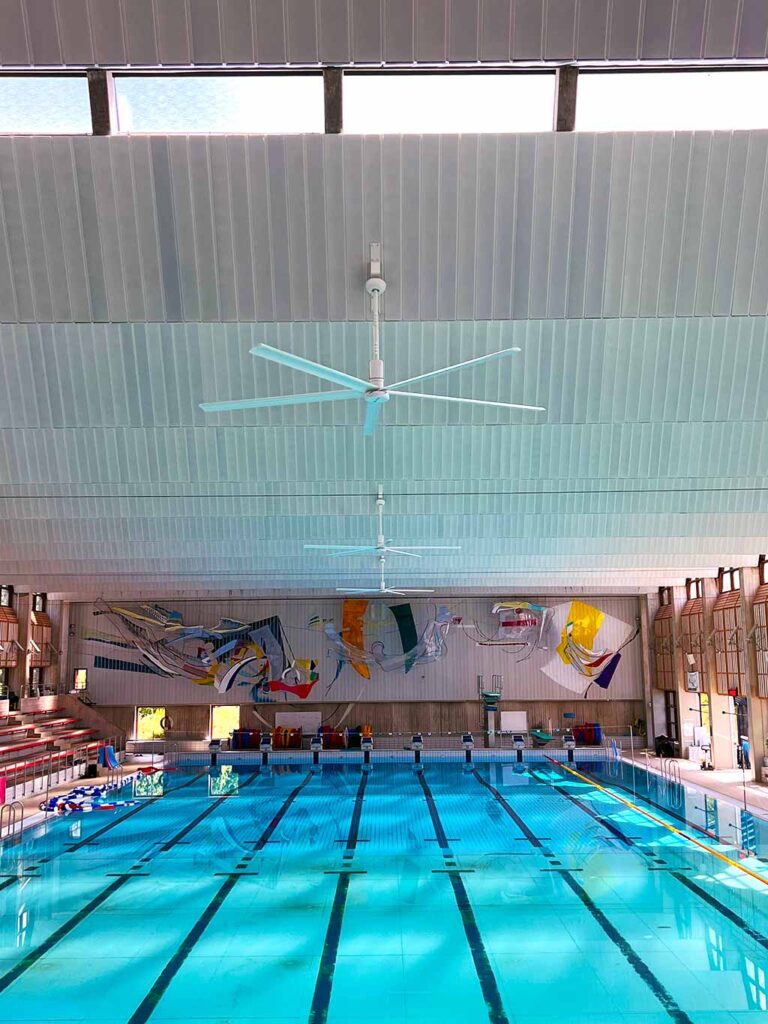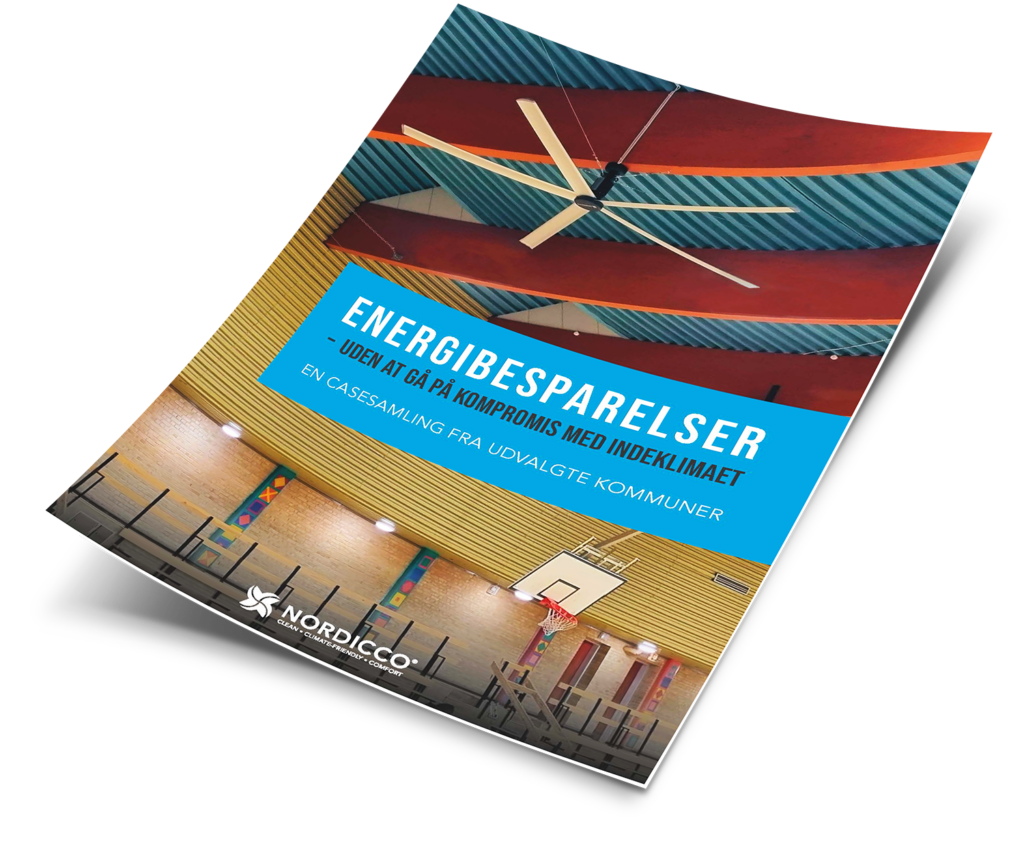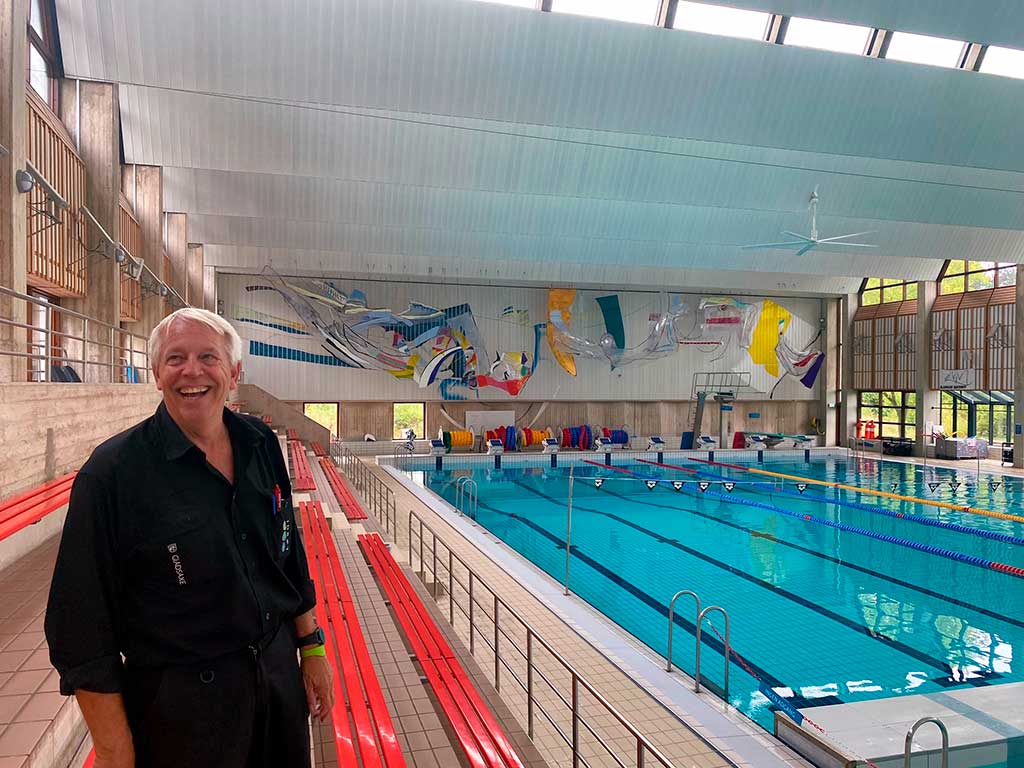
Aquatic centers are costly to operate, consuming more energy per square meter than other municipal buildings. At Gladsaxe Aquatic Center, energy consumption and indoor climate issues were major challenges. Swimmers previously opened doors for fresh air, disrupting the building’s ventilation system.
To address these issues, Gladsaxe installed three Northern Air® Aggressive Environment HVLS fans. The results include better user comfort, fewer open doors, and notably, a 30% reduction in energy consumption.
“I have been in this industry for many years – and given the challenges we have faced, I can only see benefits in installing the fans,” says the Property Technician at Gladsaxe Aquatic Center.
Gladsaxe Aquatic Center is part of Gladsaxe Municipality’s sports facilities in Copenhagen. The Aquatic Center features warm water pools and a 50-meter pool that can be divided into two 25-meter sections. The deep end has diving boards, and there’s a water slide in the shallow end. Catering to competitive swimmers, rehabilitation, fitness swimmers, and families, the center has high demands for ventilation and indoor climate.
The pool area’s standard ventilation system maintains air temperatures between 27.5°C and 28°C. The three HVLS fans are installed over the large pool.
Early morning swimmers often found the indoor climate unbearable due to high levels of THMs (trihalomethanes) near the water’s surface, leading them to open doors for fresh air, which was counterproductive.
The technical staff sought a solution to maintain a good indoor climate without needing to open doors. HVLS fans were chosen to mix the air, preventing THMs from accumulating above the water and efficiently redistributing warm air trapped under the ceiling.
“We thought it was an interesting approach we hadn’t seen before, and we could understand the logic in how these fans can help mix the air. Both to prevent THMs from staying right above the water and to mix the warm air that otherwise stays up under the roof with the rest of the air in the swimhall,” explains the facility manager about choosing HVLS fans as a solution to the uncomfortable indoor climate.
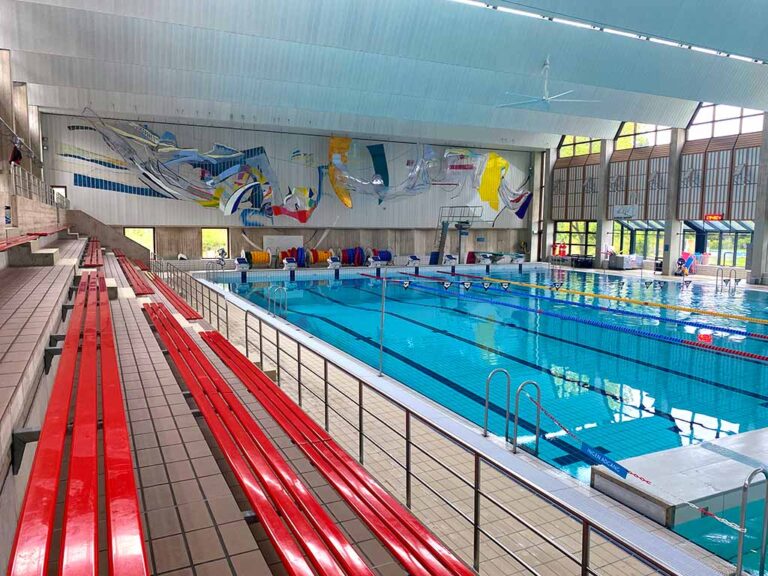
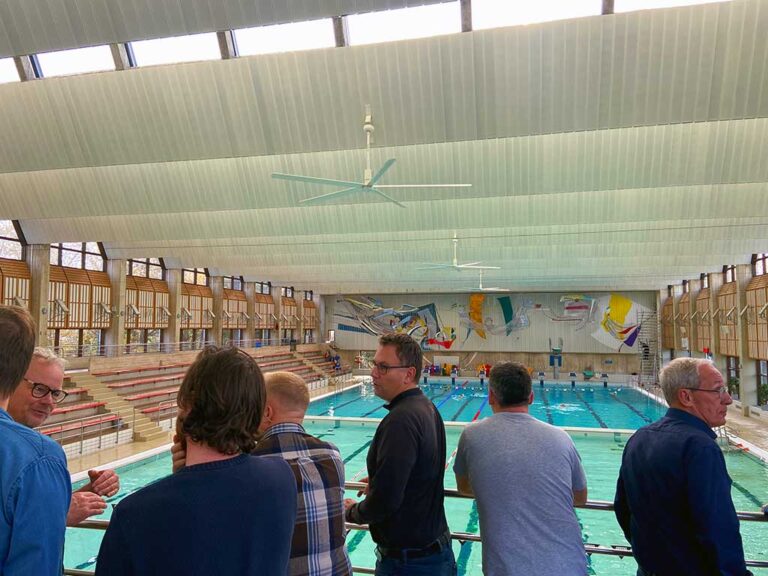
These HVLS fans are designed for harsh environments, such as swimming pools and advanced manufacturing facilities. They effectively mix air in large spaces, ideal for indoor environments with high humidity. The fans disperse THMs and chlorine vapors, improving air quality in living zone. Read more on the product page.
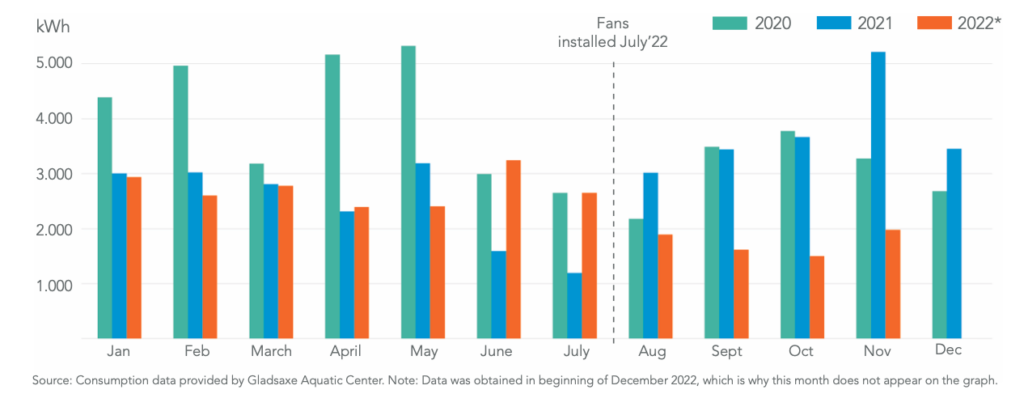
As mentioned, Gladsaxe achieved over 30% energy savings. The significant energy savings were primarily obtained from reduced electricity consumption. Specifically, this was achieved by lowering the load on the ventilation system, saving energy and money for the aquatic center.
Additionally, district heating consumption showed a similar trend, decreasing by about 5% in the second half of 2022 compared to the expected consumption.
After installing the HVLS fans in July 2022, the center saw significant monthly reductions in energy consumption compared to previous years, with electricity savings reaching 37% in August, 53% in September, 59% in October, and 62% in November.
Consumption data was provided by the center’s technical department, and is from a sub-meter used to measure electricity usage. Data was collected in mid-December 2022, so total monthly data for December couldn’t be gathered and is therefore not shown in the graph.
Besides reducing energy consumption, Gladsaxe faced indoor climate challenges like heavy, humid air, causing discomfort for users and staff. Previously, swimmers opened doors for fresh air due to THMs and chlorine vapors, but the HVLS fans now help distribute air better, reducing the need to open doors and enhancing comfort for lifeguards and coaches.
The installation of HVLS fans has improved comfort and indoor air quality, making it easier for lifeguards and trainers to work in the pool area for extended periods. The fans blend warm air previously trapped near the ceiling into the overall air circulation, optimizing energy use.
Gladsaxe Aquatic Center aims for a relative humidity of 60%. HVLS fans help achieve this by continuously circulating air, making the indoor environment feel fresher and more comfortable.
Immediately after installation, users of the aquatic center could feel a difference. There has been less need to open doors to the outside for fresh air.
The fans have helped Gladsaxe Aquatic Center in several ways, and there have been many positive feedbacks. Both staff and users enjoy the improved indoor climate: “Lifeguards and swimming coaches can stay in the aquatic center for longer periods, and everyone’s very happy and satisfied.”
“The air is being mixed in a better way. Previously, we had about 34°C hot air up under the ceiling like a warm cushion. Now, we are mixing it and utilizing it. It has become part of the overall air capacity and is being used more effectively.”
“The large 50-meter pool is used for swimming competitions, where competitive swimmers can compete in both short and long course disciplines because the pool can be divided in the middle. The aquatic center can accommodate 700 spectators, who can follow the many swimmers’ pursuit of medals and records from the sidelines.
"Often during swimming competitions, more waste products are released into the pool because many swimmers use the pool for both warm-up and the competition itself. We've often had problems with very high chlorine levels, causing air quality issues.'"
The load is heavy when there are so many swimmers who also sweat in the pool. The property technician believes that the fans can help with this at the next competition by circulating the air more effectively in the aquatic center. He is convinced that there are many benefits to installing the HVLS fans.
‘Comfort is important to us, and it has improved because the air is being circulated better. Then there’s the health aspect for our users and the energy savings. Choosing the HVLS fans was a no-brainer.’
The installation of the three fans took a week and was carried out by an external electrical company experienced in installing HVLS fans elsewhere. It was done via scaffolding in the pool during a three-week closure period over the summer, so it did not affect the aquatic center’s users.
The HVLS fans have brought significant energy savings and improved indoor air quality at Gladsaxe Aquatic Center, demonstrating a successful energy optimization strategy for similar facilities.
